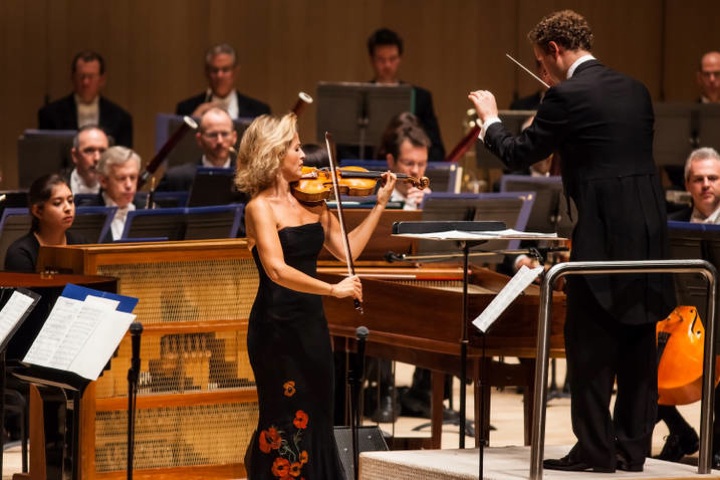
Under débuting guest conductor Michael Francis, Wednesday night’s Toronto Symphony Orchestra concert featured a commanding performance by violinist Anne-Sophie Mutter of the well known Concerto No. 2 for violin and string orchestra by J.S. Bach, the darkly intense In Tempus Praesens (For the Present Time) written for her in 2007 by Sofia Gubaidulina, as well as Beethoven’s Fifth Symphony.
In Bach’s concerto, Mutter played with exquisite control of expression and nuance in dynamic interplay with a small ensemble of strings. She executed difficult passages with a lightness that only a true virtuoso can deliver, and the small ensemble whetted the audience’s appetite for Beethoven’s Fifth, which has four times the musical forces.
The orchestra sounded sluggish in the first two movements of the Beethoven piece, despite Francis’ efficient conducting. From where I sat, the orchestra provided only three dynamic levels: soft, loud, and even louder. Fortunately, there was a marked improvement in the last two movements, where Francis drew out a wider dynamic spectrum and ably shaped the sonic textures necessary to convey the drama in Beethoven’s music.
This was the orchestra at its very best.
And those audience members who returned after intermission to hear the newer work by Gubaidulina were not disappointed.
In Tempus Praesens draws on the universal concept of the individual against an oppressive society, underlined by the composer’s own experience of having her music banned in Russia.
Gubaidulina offers an interesting twist on musical forces being pitted against one another in a concerto by removing the orchestral violins. This placed principal viola Teng Li in the role of concertmaster, leading to a chorus of delighted foot-stomping from the musicians on stage.
Augmented by a rich percussion section, the orchestra’s shifting textures and sounds made a fine contrast with Mutter’s minimalistic and meditative solo lines. Her long, sustained tones, in no way resembling melodies, conveyed deep intensity and gravity, drawing listeners into a deeply introspective state.
Under Francis’s careful direction, the intensity of the piece built gradually to the sort of dramatic heights usually experienced in opera, bringing the Roy Thomson Hall audience to a standing ovation.
If you missed this concert, you can see Mutter perform the same program again tonight (details here).
Margaret Lam